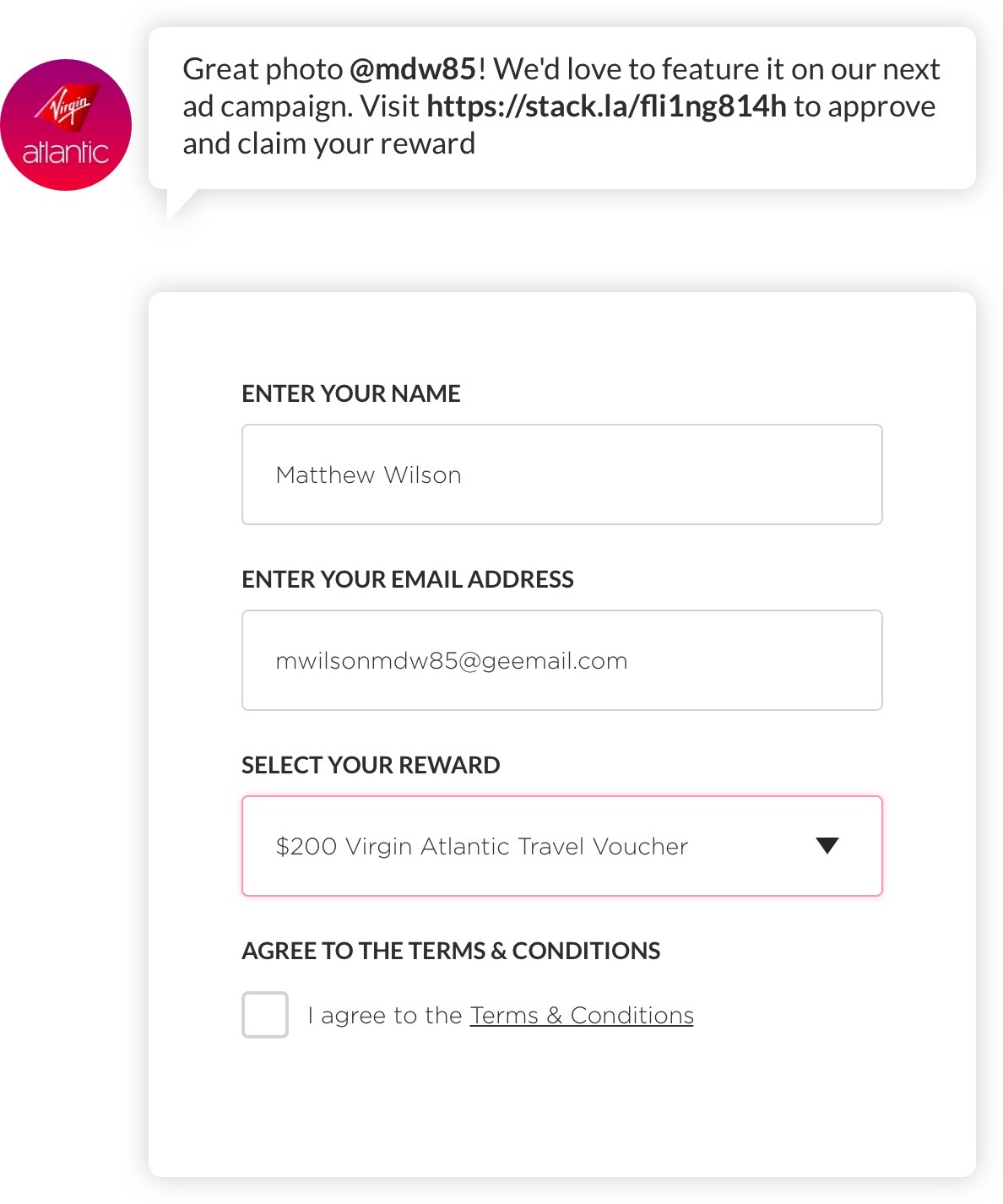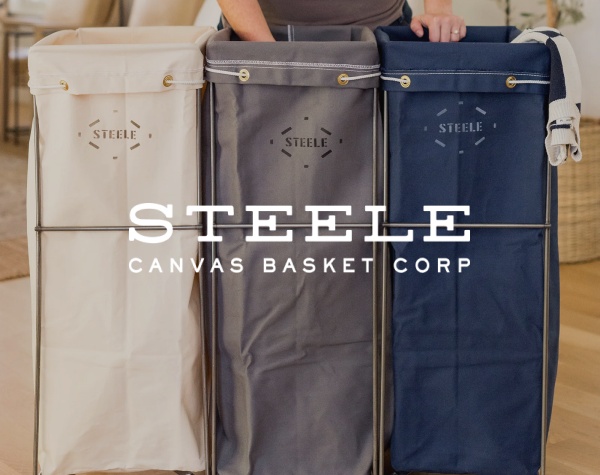Rights Management Best Practices: Why & How to Legally Leverage User-Generated Content
User-generated content (UGC) has proven to be a powerful tool for marketers, helping to fuel authentic, trusted and influential experiences across every customer touchpoint.
But with great power, comes great responsibility.
If you and your legal teams have concerns around gaining permission to leverage the content your customers are sharing about your brand online, don’t fear.
We’re here to walk through how content rights affect the ways you can use UGC and how Stackla can help you stay in your customer’s good graces, while tapping into the power of customer-created content.
When Do You Need to Request Rights?
Stackla, like most UGC platforms, only aggregates ‘public’ content.
Depending on the social network in question, ‘public’ content could mean content posted by a profile that is publicly accessible, or an individual post that has a ‘public’ status.
When users sign up on social platforms, they retain ownership of the original content they post but also grant the social network and its partner technologies (like Stackla) a ‘royalty-free’ licence to display that content.
Here’s a chunk of Twitter’s terms of service:
“You retain your rights to any Content you submit, post or display on or through the Services. What’s yours is yours — you own your Content (and your incorporated audio, photos and videos are considered part of the Content).
By submitting, posting or displaying Content on or through the Services, you grant us a worldwide, non-exclusive, royalty-free license (with the right to sublicense) to use, copy, reproduce, process, adapt, modify, publish, transmit, display and distribute such Content in any and all media or distribution methods (now known or later developed).
All the other social networks have similar terms and conditions.
So what does this mean for brands?
Basic Use: Websites, Event Screens and Emails
You can use technologies like Stackla to aggregate, curate and display public social content within certain guidelines. Those guidelines are stipulated in the network terms and conditions (T&Cs) and basically revolve around maintaining attribution and not editing the content.
All Stackla’s website widgets, event screens and email templates comply with the network T&Cs so you can be confident republishing UGC without needing to first request content rights.
Extended Use: Advertising, Non-Attributed Display and Offline Channels
There are certain use cases where it is either wise or required to obtain legal rights from the content creator before use. These come under what we call ‘extended use’ cases and would include use in any online or offline advertising — from social and display ads to digital-out-of-home (DOOH) billboards and print advertising. It would also include any time you intend to display content without attribution or in an edited state.
In these cases, Stackla Rights Management offers flexible solutions to obtain the permissions you need to put UGC to work in your marketing.
How Does Rights Management Work?
Stackla provides a number of workflows that allow you to reach out to the content creator and ask them to grant you rights to their content.
The scope of the rights are controlled by you through the terms and conditions that you attach to the request.
There are a couple of methods available to you for user-generated content rights management, each with different benefits.
Rights by Response (Aka the Hashtag Method)
 Rights by Response works by enabling you to send a reply to the social post you wish to request rights for, including a link to T&Cs and a unique hashtag of your choice.
Rights by Response works by enabling you to send a reply to the social post you wish to request rights for, including a link to T&Cs and a unique hashtag of your choice.
To accept the T&Cs and grant you rights, the content creator needs only to respond to the comment using the unique hashtag.
When they do, the content is marked as “rights approved” in Stackla and you’re good to go.
Benefits:
- Low effort for content creators as it only requires a response
- On-platform – entire process takes place on the social platform
- Fast – content creators are more likely to respond to this method as it requires little effort
Rights by Registration (Aka the Form Method)
 Rights by Registration works by generating a unique link that the content creator can visit to grant you rights.
Rights by Registration works by generating a unique link that the content creator can visit to grant you rights.
When they visit the link, they will complete a form containing any fields that you choose to configure (eg. name, email, contact details, location).
They will also accept your T&Cs and submit the form to grant approval.
Benefits:
- More legally robust than Rights by Response as it requires explicit acceptance of T&Cs
- Opportunity to capture customer data which can be sent directly to your CRM or used by your personalization platform to enrich customer profiles
- Data capture can be used to trigger additional processes, such as outreach or rewarding customers with offers or coupons
Rights Management Best Practices
Working with the world’s leading consumer brands, we’ve learnt a bunch about what works and what doesn’t when requesting user-generated content rights.
From brands that request rights to a handful of content each month to those that reach out to thousands of brand advocates a year, we have a few key lessons to share, all of which have influenced how we built our Rights Management functionality.
Be Where Your Customers Are
If there’s one thing that characterizes the content landscape in 2018, it’s diversity.
Your customers are likely on the most popular social platforms such as Instagram, Twitter and YouTube, but you’re also likely to find great content in other places too. Niche networks like Twitch and SoundCloud, regional networks like WeChat and Weibo and blog platforms like Medium and WordPress are becoming increasingly relevant to brands.
Stackla is the only platform that allows you to request and receive rights to content on any of the 25+ network sources we aggregate from.
Create a Fully-Branded Experience
Trust plays a huge role in rights approval rates. Content creators must feel confident that a request has genuinely come from your brand and be comfortable through each step of the rights approval process.
Stackla allows you complete control over the branding of the Rights Management workflows. Everything your customers see will reflect your brand — from logos and color schemes to typography, you can customize Rights Management to deliver a seamless, branded experience that will boost confidence and improve your approval rates.
Stay on Message
Your tone of voice should carry through the Rights Management process just as your branding does. Stackla allows you to pre-configure your request messages, so you can have your content team or copywriter craft messages that speak in your brand voice.
Craft T&Cs With Your Legal Team, But For Your Market
We find brands get the best results when they only ask for the permissions they need.
Say you wanted to use an Instagram image in a single ad campaign, you have full control over your terms and conditions for every request so you can limit your terms to cover your use case accordingly.
If you want to turn earned content into an owned asset to be used in perpetuity, your terms and conditions should request the granting of full intellectual property rights.
Leverage Bulk Requests
Rights Management is not only a way to obtain content rights, but also to acknowledge your advocates online.
The more user-generated content you want to obtain rights for, the more burdensome that process can become.
Our Rights Management enable you to automate bulk requests for high-volume campaigns or social competitions — saving you tons of time and effort.

Schedule Requests
Don’t run afoul of the social network’s anti-spam protections. Sending too many rights requests in a period of time or sending multiple request without a significantly unique message can get you in trouble.
Stackla’s smart scheduling helps you craft messages that are unique and drips them out on a schedule so you don’t break any rules.
Your customers are your best marketers. Instead of marketing at them, you should be marketing with them.
By following these user-generated content rights management best practices, you can effectively assuage legal concerns while building genuine customer trust and engagement.
*Readers should consult a legal professional when developing UGC rights management guidelines.




